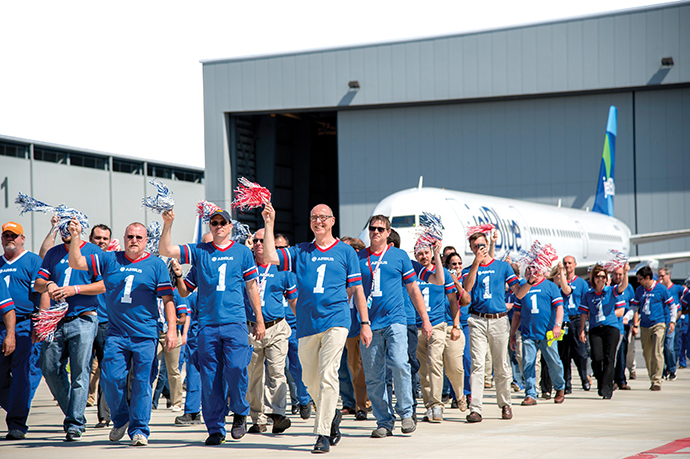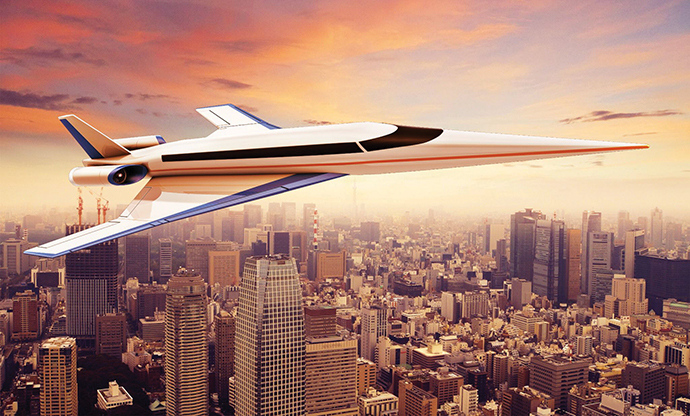The aviation and aerospace industry truly developed at the onset of World War I. In the 100 years since, this industry has evolved tremendously — and so have site location needs for aircraft and aerospace companies. Aviation’s early pioneers weren’t necessarily seeking thriving communities when they built their airplane factories. Beyond large tracts of land, those early aircraft manufacturers sought locations that had an available workforce and access to supplies and shipping through railways and ports.
Today, aircraft manufacturers and their suppliers still need locations with a robust talent pool and efficient supply chain network. In addition, community incentives have become key considerations that global aerospace companies evaluate when seeking a new manufacturing site.
It’s not surprising, therefore, that state, county and local economic development organizations (EDOs) have been and continue to be diligent in their efforts to attract aerospace manufacturers and top-tier suppliers to their areas. The result of locating a large aerospace operation in their community means job growth that can number in the thousands, highly skilled worker salaries that can rank substantially above the national average, and a jump-start in economic prosperity that can span an entire region.
Finding the ideal location for new facilities is a challenge. Choosing a site for a new facility requires immense research, and Austin Consulting provides detailed analysis and recommendations to assist companies in doing so — helping them to choose the location that best fits their needs. We look at everything: freight, labor, taxation, utilities, education and access to suppliers. We compile a detailed report after evaluating start-up costs, discussing the project with utility representatives and technical school administrators, conducting site visits and crunching the numbers. A location recommendation is presented to the client, who then makes the decision of where to build the new facility.
It’s also important to look at the community. These companies are significant contributors to the community and often bring economic prosperity to the area because suppliers will want to locate nearby as well. We take a close look at how proactive the business community is. A community will do almost anything to lure a big company, but after they’re there, how active will the business community be in addressing the company’s on-going needs?
With major competition for a limited number of new aerospace site location projects, it is important for both aerospace manufacturers and EDOs to consider the following:
- Company Objective (The Client): What are the most important variables or criteria to be considered for your next expansion?
- Economic Developer Objective (The Suitor): You must understand the major considerations important to the aerospace sector and determine if your community and region have the necessary attributes to effectively compete in this highly aggressive sector.
Highlighted below are key considerations the aerospace sector should analyze when seeking a new location, along with creative programs conducted by EDOs to assist companies in addressing these important factors.
The Talent Pipeline
Companies must first assess their current and future workforce needs, including a clear understanding of the type of workers necessary, the skills needed for their operations, and number of jobs needed to fill key positions throughout all skill levels. A general understanding of the salary and benefits needed to secure the right people is also needed. This workforce analysis will then help companies understand worker availability throughout the locations being considered.

The workforce analysis should also include review of educational programs — including universities, colleges and technical training schools — located near areas under consideration. Not only are the schools prime locations for recruitment from engineering programs, but they can also provide continuing education opportunities once operations are up and running. Higher-skilled positions will likely need securing through transferring key employees from existing operations, through regional and national searches, and even through competitor operations.
Workforce needs may include aerospace engineering and operations technicians, electricians, equipment mechanics and technicians, and CNC machine operators and assemblers.
Also, aerospace companies electing to be near military bases can reap the benefits of newly retired military trained personnel.
Southeast Case Studies
Training incentives were key to the eventual construction in 2013 of Airbus’ $600-million manufacturing center at Mobile’s Brookley Aeroplex. The facility is responsible for assembly of the A320 family of aircraft. As part of the site selection process, Alabama Industrial Development and Training (AIDT) worked to create the Alabama Aviation Training Center to prepare workers for future employment on the Airbus A320 Family Assembly Line. The Training Center’s labs and classrooms offer a tailored curriculum that consists of state-of-the-art, hands-on, on-site training specifically aimed at the success of the Airbus facility, a project that has been transformative for the Mobile area and the state of Alabama.
Workforce training incentives also figured prominently in the successful 2014 location of a $500-million expansion project for Northrop Grumman at Melbourne International Airport in Brevard County, Florida. With help from Enterprise Florida, Inc., the principal EDO for the state, Northrop Grumman was offered performance-based partial reimbursement grants for employee training through CareerSource Florida’s Florida Flex. The grants are structured to be flexible and responsive to the training needs of new or expanding businesses and allow for the use of state educational facilities (community colleges, area technical centers, school districts and universities) to assist with training program development and delivery.
Over the past several years, the aerospace industry’s primary growth has been in the southeast region of the United States. The southern states have been among the most aggressive in luring major manufacturers such as aerospace and automotive and certain communities in these locations have the key ingredients to supporting aircraft and aerospace manufacturers. We believe we’ll continue to see movement of global aviation and aerospace companies looking to locate in Alabama, Florida, Georgia and South Carolina.
Another advantage that the Southeast has in attracting aviation and aerospace companies is the number of US military bases. The bases in Alabama, Florida and South Carolina are an excellent source of skilled workers. These service men and women have honorably served our country and are retiring from the military, but they’re too young to really retire. With aircraft and aerospace manufactures near these bases, these individuals can be very successful in the manufacturing industry.
Logistics, Property & Utilities
Another important consideration lies in selecting the right location as it relates to raw material suppliers and end-users. Location-seeking aerospace companies have unique site requirements for their operations. Undoubtedly, access to air and ocean transportation hubs and ports is essential, but also vital is road and rail ground transportation to and from the site.

Depending on the site size needed, aerospace companies should consider industrial parks near Interstates for ease of transporting components and finished goods. If raw land or undeveloped sites are under consideration, the company needs to consider the types of site and road improvements necessary to transform this type of environment into an attractive operation for their intended use.
In addition, the company must assess utility availability, including electric power, natural gas and municipal water and wastewater. Current and future needs must be understood early on, to determine if major utility extensions or upgrades are necessary at the site, again for the intended use. Local or state government assistance programs are often utilized to extend utilities to the site at no cost to the company.
Site Development Incentives
Many EDOs are now offering assistance with site development and costs if the potential site presents challenges involving utilities, access roads and the overall surrounding road network.
For example, when Boeing sought to locate their state-of-the-art 787 Dreamliner Final Assembly and Delivery Facility in North Charleston, South Carolina, in 2011, they were offered a traditional package reportedly worth $450-million that was contingent on the company creating 3,800 jobs and investing $750-million over the next seven years. Also sweetening the deal were incentives, negotiated through the Charleston County Economic Development Department, that assisted with improving roads around the Boeing campus, and building an additional interchange on nearby Interstate 26. These road improvements, representing a roughly $80-million investment by Charleston County, led to the successful building of the site, which is the major manufacturing, assembly and delivery operation for Boeing commercial aircraft in the eastern United States, and one of the largest employment centers in the state of South Carolina.
Furthermore, when France’s Airbus sought to locate their first manufacturing center in the US, Mobile, Alabama, was high on their list of potential locations. Under a uniquely strong economic development collaboration that involved federal, state, county, city and Chamber of Commerce entities, Mobile offered Airbus a comprehensive incentive package worth $158 million, which included traditional tax incentives as well as help with site preparation, land lease assistance and roadway improvements.
In addition to these considerations, other important variables not discussed above may also influence a site location decision. By understanding these major considerations, the EDO should be able to assess and determine if their region is a viable candidate for the aerospace industry, working in a “suitor” role to become an active recruiter to the aerospace industry.
Frank Spano is managing director at The Austin Company. Susan Riffle is the company’s manager of communications. For more information about the company’s location analysis, design, engineering and construction capabilities in aerospace, automotive, pharmaceuticals, energy and other fields, visit www.theaustin.com.
